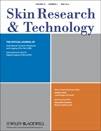Skin hydration and cooling effect produced by the Voltaren® vehicle gel
Abstract
Background
Voltaren vehicle gel is the carrier substance of the topical Voltaren products. This vehicle gel is especially formulated to be easily applied on the skin, while providing some sensory benefits. The present study aims to substantiate the widely perceived hydrating and cooling effect of Voltaren vehicle gel.
Methods
Volar forearm skin hydration and transepidermal water loss (TEWL) were measured and user satisfaction was evaluated by questionnaires, after application in 31 healthy, female volunteers. The cooling effect was investigated for 40 min with thermal imaging on 12 forearm sites of six healthy subjects.
Results
Voltaren vehicle gel application increased skin hydration by 13.1% (P = 0.0002) when compared with the untreated site, 8 h after the final treatment after 2 weeks. TEWL decreased on both treated (0.37 g/m2/h) and untreated (0.74 g/m2/h) forearm sites after 2 weeks (8 h after last treatment), demonstrating a relative increase of 6.5% in water loss. Voltaren vehicle gel application resulted in a rapid reduction of skin surface temperature by 5.1°C after only 3 min with an average maximum reduction of 5.8°C after 10 min. The cooling effect was experienced by 94% subjects, while 74% felt that their skin became softer. No adverse events, including skin irritation, were reported during the study and by the 37 participants.
Conclusion
This study showed a statistically significant increase in skin hydration as well as a rapid cooling effect lasting approximately 30 min, after application of Voltaren vehicle gel. The small relative increase in water loss may be attributed to an additional skin surface water loss secondary to the increased water content brought into the skin by the Voltaren vehicle gel. The use did not induce any skin irritation and was found acceptable to use by the majority of participants.




